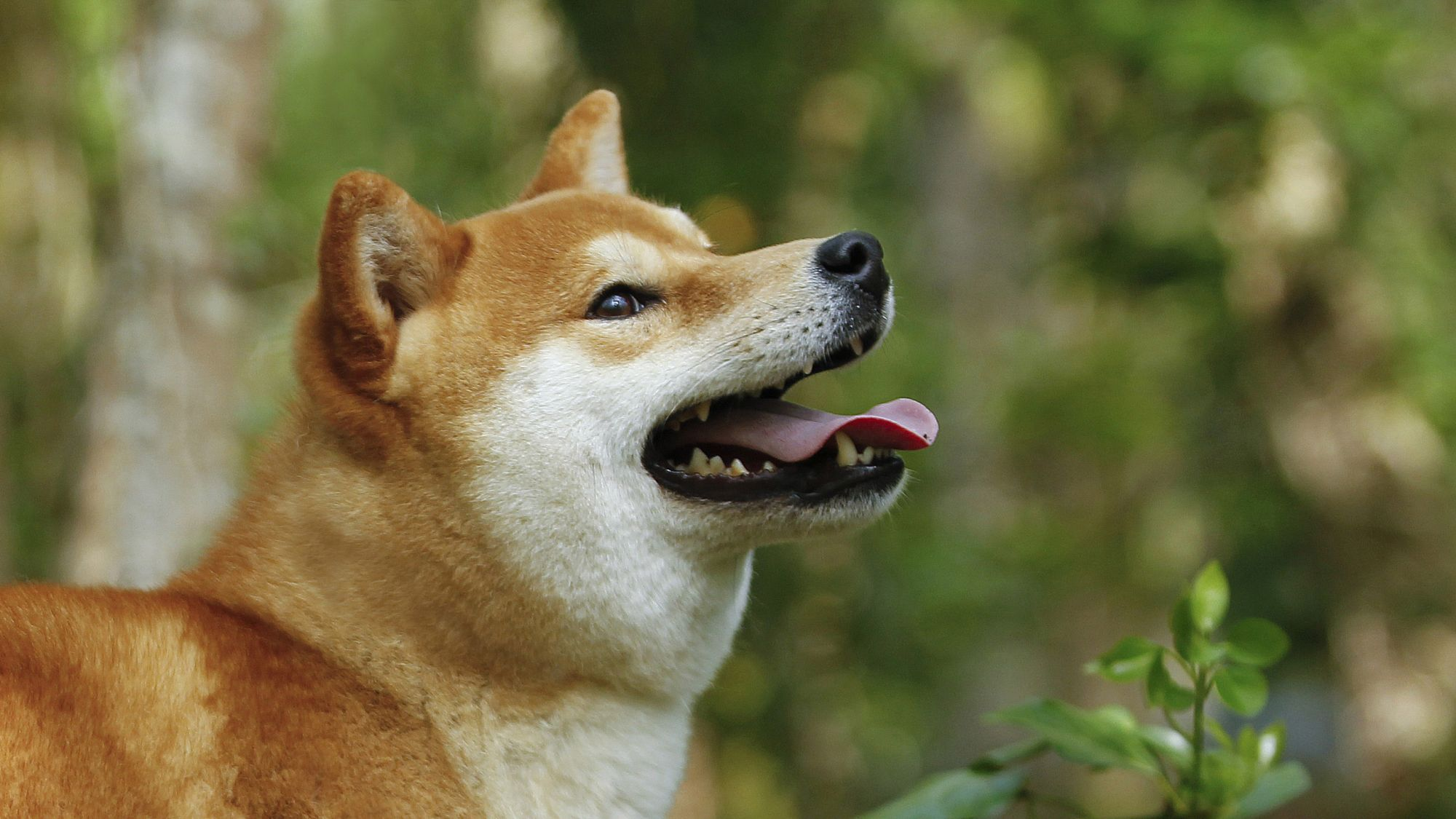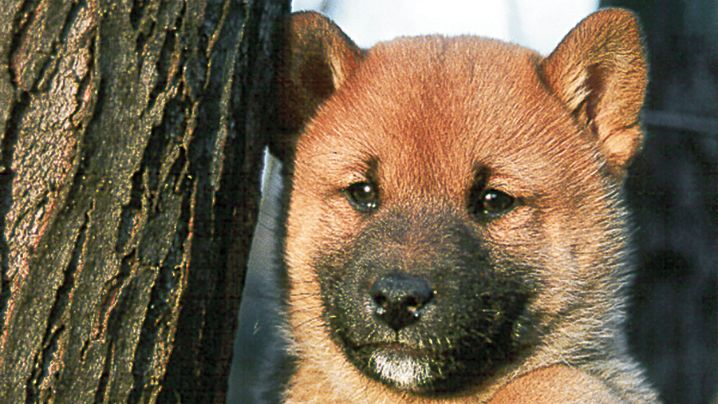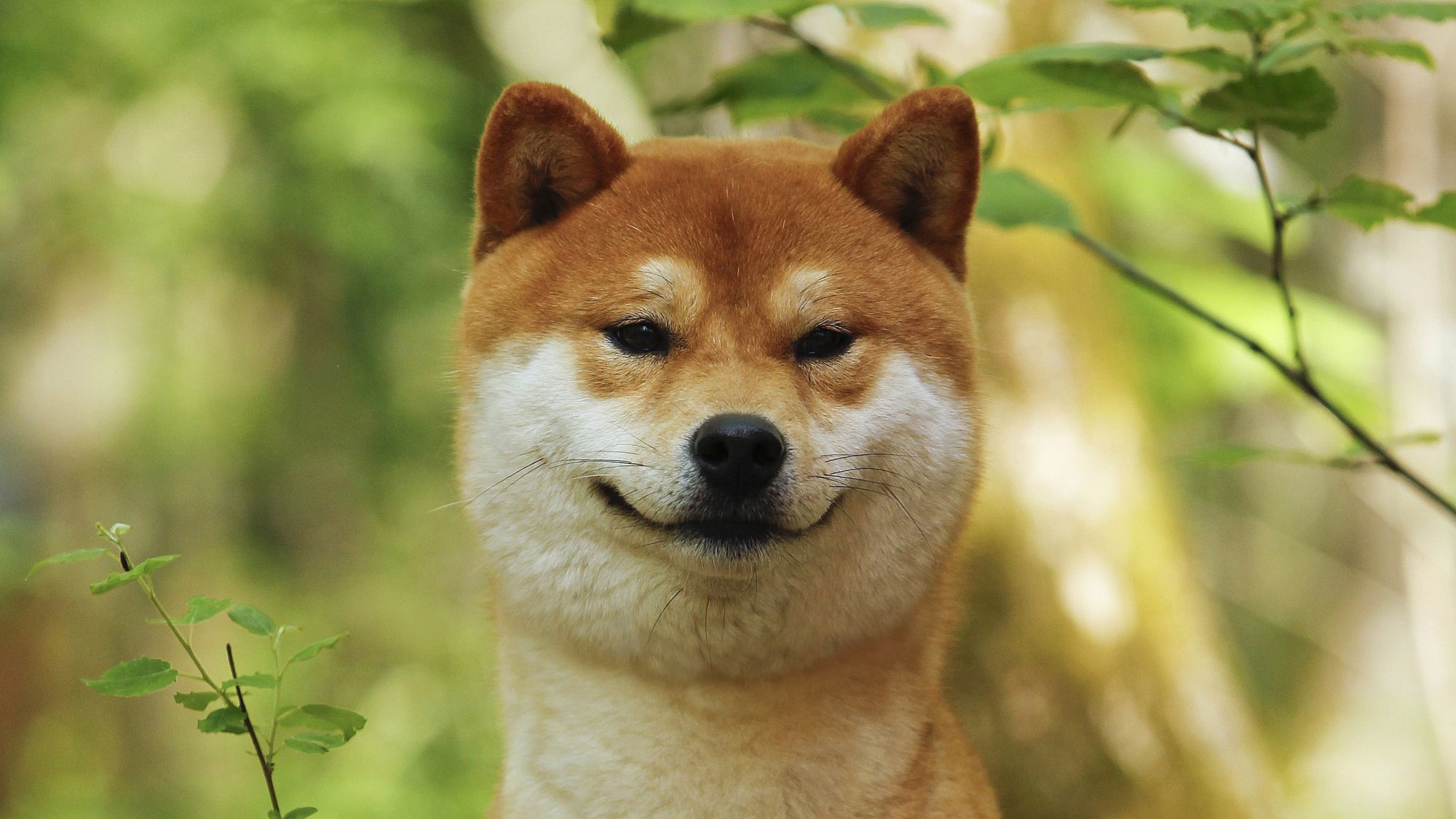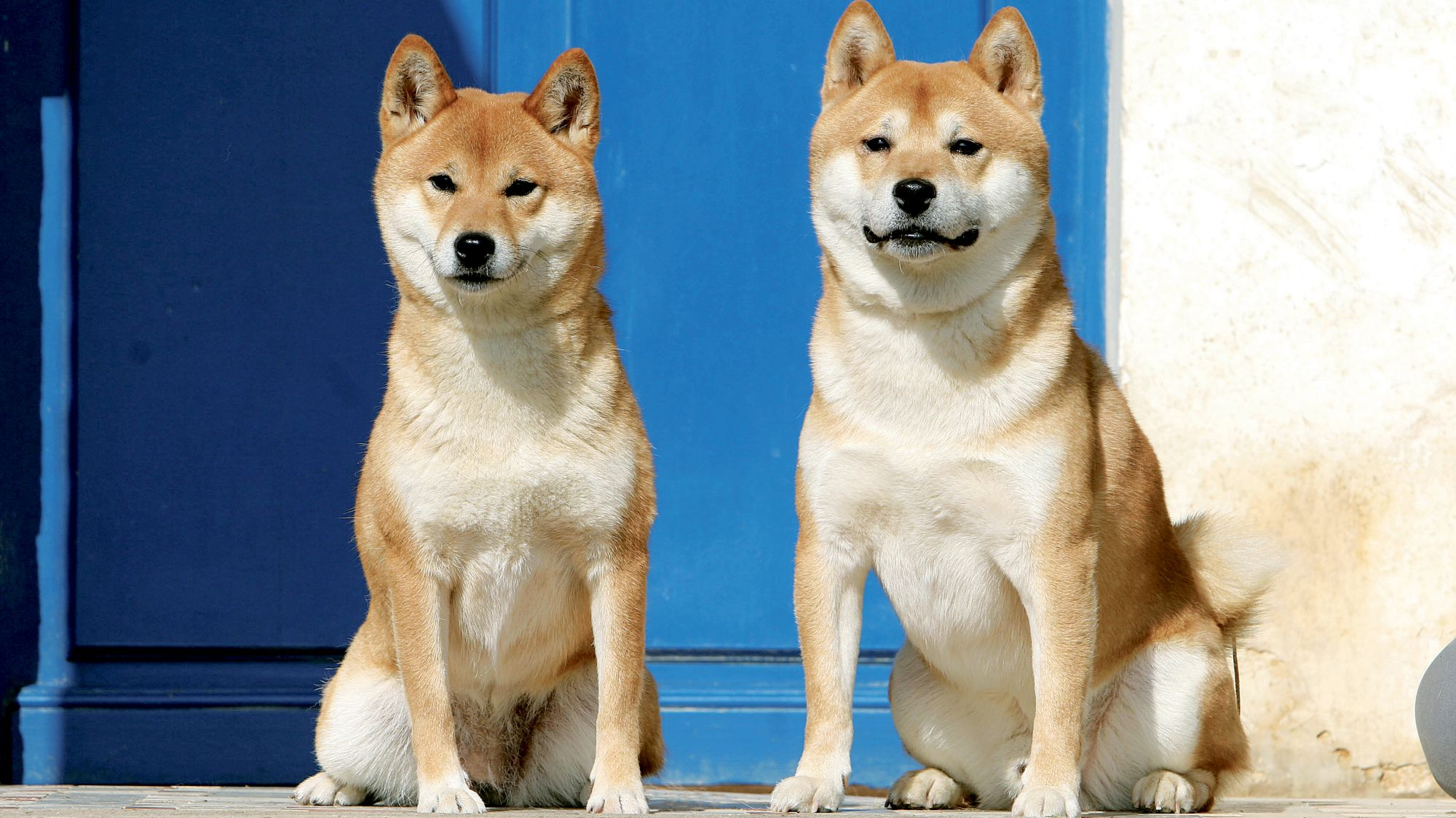Let's talk Shiba Inus
Once bred as hunting dogs in their native Japan, Shiba Inus are now prized as a “national monument”. Clever, independent and quick on their feet, Shibas are sometimes compared to cats thanks to their confident, you-need-me-more-than-I-need-you demeanor. However, with early training and socialization, a Shiba Inu makes for a deeply loyal family member.
Official name: Shiba Inu
Other names: Shiba
Origins: Japan
Drooling tendencies
1 out of 5Grooming needs
2 out of 5Shedding Level
4 out of 5Barking tendencies
1 out of 5Energy level*
1 out of 5Compatibility with other pets
2 out of 5Warm weather?
4 out of 5Cold weather?
5 out of 5Suited to apartment living
5 out of 5Can be left alone
3 out of 5Family pet?*
3 out of 5
| Male | Female |
|---|---|
| Height | Height |
| 36 - 41 cm | 33 - 38 cm |
| Weight | Weight |
| 17 - 23 lb | 13.5 - 15.5 lb |
| Life stages | |
|---|---|
| Puppy | Adult |
| 2 to 12 months | 12 months to 7 years |
| Mature | Senior |
| 7 to 10 years | 10 to 20 years |
| Baby | |
| Birth to 2 months | |
Drooling tendencies
1 out of 5Grooming needs
2 out of 5Shedding Level
4 out of 5Barking tendencies
1 out of 5Energy level*
1 out of 5Compatibility with other pets
2 out of 5Warm weather?
4 out of 5Cold weather?
5 out of 5Suited to apartment living
5 out of 5Can be left alone
3 out of 5Family pet?*
3 out of 5
| Male | Female |
|---|---|
| Height | Height |
| 36 - 41 cm | 33 - 38 cm |
| Weight | Weight |
| 17 - 23 lb | 13.5 - 15.5 lb |
| Life stages | |
|---|---|
| Puppy | Adult |
| 2 to 12 months | 12 months to 7 years |
| Mature | Senior |
| 7 to 10 years | 10 to 20 years |
| Baby | |
| Birth to 2 months | |

Get to know the Shiba Inu
All you need to know about the breed
Only recently introduced to the West in the middle of last century, Shibas have quickly become a favored companion. Often taken for foxes thanks to their agile gait, triangular, pointed ears and alertness, Shiba Inus ooze confidence through their steady, placid gaze.
Once used to flush out game in the mountains of their native Japan, Shiba Inus are a small, well-proportioned, all terrain breed that also happens to enjoy the indoor life. Still, they need a good romp outdoors, and, because they have a strong predatory instinct, it is highly recommended they be kept on a leash. These little Houdinis can find their way out of most situations – and once they’re off, they’re well and truly off!
Shiba Inus express themselves in a variety of behaviors including intriguing “vocalizations” that have been compared to yodeling. The takeaway: with Shibas, there’s rarely a dull moment.
Because they are strong-willed and clever, early training and socialization are key in successfully raising this confident breed. Naturally territorial, a Shiba quickly appropriates things and people. They should be taught to share from the earliest age. With the right training, Shiba Inus grow up to be devoted to and protective of their humans.

Two facts about Shiba Inus
1. Don’t call it a comeback
Though not officially named the “Shiba Inu” until the 1920s and still a relative newcomer to the West, Shibas are anything but new. This prized breed has been around for more than nine thousand years. In fact, depictions of Shiba-like dogs have been found in primitive Japanese drawings dating back to 300 B.C.
2. Saved from the brink
There were originally three types of Shiba Inu native to Japan: the San-in, Mino, and Shinso. Sadly, the violence of World War II and a subsequent outbreak of distemper eradicated too many of the three strains for any to survive in their pure form. Thankfully, major efforts were made to save the Shiba Inu by breeding the three lines together. The result is the Shiba Inu known and adored today.
History of the breed
With DNA tests confirming its presence in the country as far back as 7000 B.C. Originally used by hunters to flush out game, some suggest the name “Shiba” is the Japanese word for “brushwood”, a reference to the type of bushes where they hunted. A second theory suggests the name Shiba comes from the colors of the brushwood leaves, which the breed’s coat resembles. And a third idea says that “Shiba” meant “small” in a now-obsolete dialect. In fact, “Inu” is quite simply the Japanese word for dog. In any case, the name wasn’t made official in Japan until the 1920s.
Thanks to campaigning done by breed enthusiasts and NIPPO, the Association for the Preservation of Japanese Dogs, the Shiba Inu was declared a National Monument in 1937. In the mid-18th century, Japan began importing other breeds, crossbreeding the newcomers with native breeds like the Shiba Inu, consequently diluting the latter’s bloodline.
The violence of WWII and a later outbreak of distemper pushed the breed to the brink of extinction. Shortly afterward, programs were established to crossbreed the surviving Shiba bloodlines, giving us the dog that we recognize today.
The Shiba first landed on American soil in 1954, brought over by a US military family; however, the birth of the first U.S. litter in 1979 is widely considered the date the breed was established in the country. Still, the Shiba Inu only gained full recognition from the AKC and UKC in 1992.
From head to tail
Physical characteristics of Shiba Inus
1.Topcoat
2.Undercoat
3.Face
4.Ears
5.Tail

Things to look out for
From specific breed traits to a general health overview, here are some interesting facts about your Shiba Inu.
Allergies aren’t just a human issue
Shiba Inus can suffer from allergies, which fall into three main categories: food allergies, contact allergies, and inhalant allergies. Be on the lookout for signs of the latter, which can include itching, redness and / or hair loss. Should you notice any of these, it’s best to head to your vet as soon as possible so you can find a suitable treatment.
Seek out qualified breeders for healthy hips
It is not uncommon for the Shiba Inu to develop hip dysplasia, an inherited skeletal condition that causes significant pain and / or lameness in the hind legs. Because hip dysplasia is genetically transmitted, it’s vital to find a reputable breeder that can provide you with the necessary health clearances for your puppy’s mom and dad. A physical exam at your Shiba’s regular check-ups, and an X-ray can deliver a definitive diagnosis that will enable your vet to chart a course of action.
Smaller dogs can have kneecap issues
Patellar luxation is a condition wherein the patella, or kneecap, slides in and out of place, and is a common cause of discomfort and lameness, particularly in small dogs. Be on the lookout for “skipping”, a movement wherein your Shiba carries the affected limb for several steps, sometimes shaking it out before resuming use of it. Your vet can diagnose patellar luxation and recommend the best treatment to help keep your Shiba in great shape.
Tailored nutrition for Shiba Inus

When choosing food for a Shiba Inu, there are many factors to consider: their age, lifestyle, activity level, physiological condition, and health including potential sickness or sensitivities. Food provides energy to cover a dog’s vital functions, and a complete nutritional formula should contain an adjusted balance of nutrients to avoid any deficiency or excess in their diet, both of which could have adverse effects on the dog.
Strong Immune System
Supports the development of the puppy’s healthy immune system with the inclusion of clinically proven antioxidants, including vitamins E and C.
Brain Development
Enriched with DHA, an omega-3 fatty acid that is scientifically proven to support the puppy's brain development.
Microbiome Support
Combination of prebiotics and highly digestible proteins to help promote a healthy balance of intestinal bacteria for digestive health.

The main nutritional goals for adult Shiba Inus are:
Body Condition
Helps maintain ideal weight and muscle mass with optimal levels of protein.
Healthy Immune System
Clinically proven antioxidants (vitamins C and E) and prebiotics for a healthy gut and immune system.
Healthy Digestion
Easy-to-digest proteins, vitamins & minerals, and a blend of fibers for optimal nutrient absorption.

After 7 years old, Shiba Inus start facing the first signs of ageing. A formula enriched with antioxidants will help maintain their vitality and an adapted phosphorus content will support their renal system. Aging is also accompanied by the modification of digestive capacities and particular nutritional requirements, so food for older Shiba Inus should have the following characteristics:
Body Condition
Helps maintain ideal weight and muscle mass with optimal levels of protein..
Vitality Support
Supports heart, kidney and brain health in first stage of aging.
Healthy Immune System
Clinically proven antioxidants (vitamins C and E) and prebiotics for a healthy gut and immune system.

Caring for your Shiba Inu
Grooming, training and exercise tips
Shiba Inus are naturally active and very playful, so they need a good dose of regular activity. Be sure to take your Shiba out for a decent-length walk or jog (always on a leash) or let them run free in a secure enclosure every day. Shiba Inus are at ease in any outdoor setting whether it’s the forest or a busy shopping area, as long as they’re with their humans. And the more activity they get, the more relaxed and well-behaved they’ll be at home.
Their gorgeous chic-and-short coats, particularly the winter version, come at a price, which could be estimated at around that of a good vacuum cleaner. For Shiba Inus, it’s he shed, she shed.
For most of the year, you can expect light shedding that is easily managed with regular brushing to remove excess hair. The good news is, the Shiba Inu breed standard prohibits trimming. That said, Shibas shed their seasonal coat twice a year.
As with many dogs, Shiba Inus don’t jump for joy at having their nails clipped. If you are going to seek professional help for any grooming need, this may be the one. One strategy to make this process as smooth as possible is to start manipulating their paws at a very early age. This way, they grow accustomed to you and others handling them!
Be sure to maintain your Shiba’s dental hygiene with an adapted kibble that encourages chewing and at-home brushing.
It cannot be overstated: earlier is better when it comes to training.
Shiba Inus are highly intelligent, know what they do and don’t want, and tend to be stranger-averse, which is why reward and toy-based training and socialization should be implemented as early as possible.
An important thing to remember: when Shiba Inus are let off their leash, they will take off running. Be sure to keep your Shiba on his leash and, when not out for a walk, in a secure enclosure or safe inside your home.
With early training and socialization, Shiba Inus make fantastic, affectionate companions, so the hard work definitely pays off!
Shiba Inus are naturally active and very playful, so they need a good dose of regular activity. Be sure to take your Shiba out for a decent-length walk or jog (always on a leash) or let them run free in a secure enclosure every day. Shiba Inus are at ease in any outdoor setting whether it’s the forest or a busy shopping area, as long as they’re with their humans. And the more activity they get, the more relaxed and well-behaved they’ll be at home.
Their gorgeous chic-and-short coats, particularly the winter version, come at a price, which could be estimated at around that of a good vacuum cleaner. For Shiba Inus, it’s he shed, she shed.
For most of the year, you can expect light shedding that is easily managed with regular brushing to remove excess hair. The good news is, the Shiba Inu breed standard prohibits trimming. That said, Shibas shed their seasonal coat twice a year.
As with many dogs, Shiba Inus don’t jump for joy at having their nails clipped. If you are going to seek professional help for any grooming need, this may be the one. One strategy to make this process as smooth as possible is to start manipulating their paws at a very early age. This way, they grow accustomed to you and others handling them!
Be sure to maintain your Shiba’s dental hygiene with an adapted kibble that encourages chewing and at-home brushing.
It cannot be overstated: earlier is better when it comes to training.
Shiba Inus are highly intelligent, know what they do and don’t want, and tend to be stranger-averse, which is why reward and toy-based training and socialization should be implemented as early as possible.
An important thing to remember: when Shiba Inus are let off their leash, they will take off running. Be sure to keep your Shiba on his leash and, when not out for a walk, in a secure enclosure or safe inside your home.
With early training and socialization, Shiba Inus make fantastic, affectionate companions, so the hard work definitely pays off!
7/7
All about Shiba Inus
Because Shiba Inus are independent, smart, and strong-willed, they are not the easiest breed to train. However, with sound training and socialization starting at an early age, they can become the most delightful, faithful companions. Reward-based training, in good measure, is highly recommended for this breed.
Because Shibas aren’t “needy” dogs when it comes to human attention, they are fine at home on their own; however, make sure to give them adequate daily exercise to counterbalance this alone time. If your Shiba is not content over being left alone without sufficient exercise, his resulting boredom can drive him to chew on whatever he finds at home.
Other breeds that might interest you
Read more on this topic
Sources
- Vetstreet www.vetstreet.com
- Dog Time www.dogtime.com
- American College of Veterinary Surgeons https://www.acvs.org/
- Royal Canin BHN Product Book
- American Kennel Club https://www.akc.org/
Like & share this page